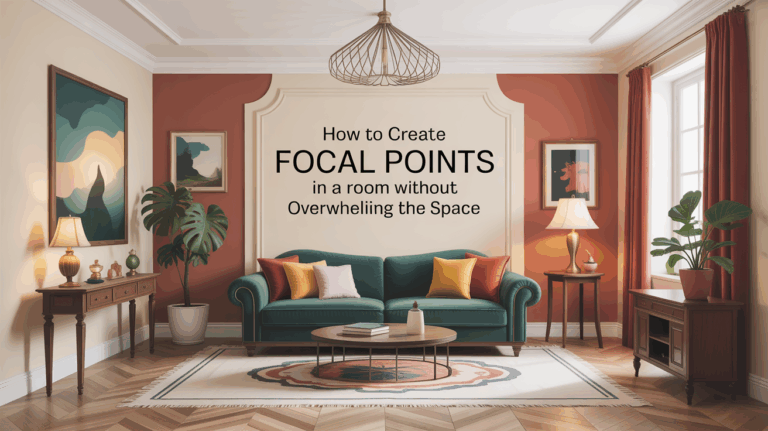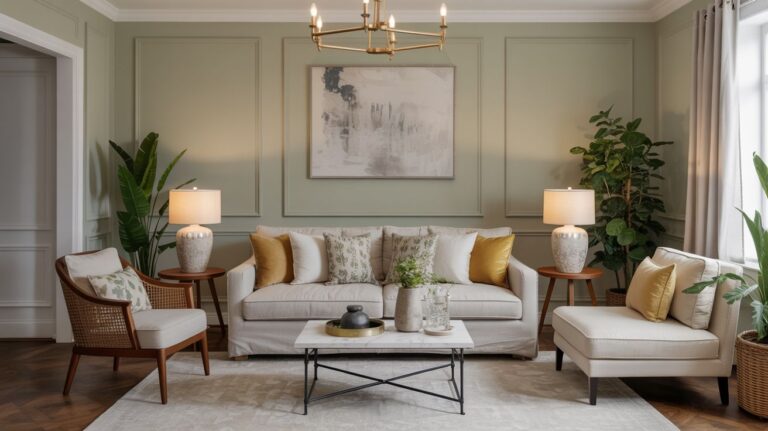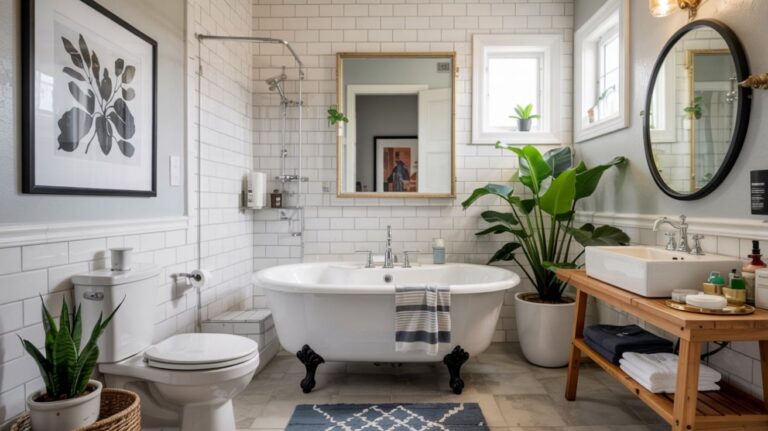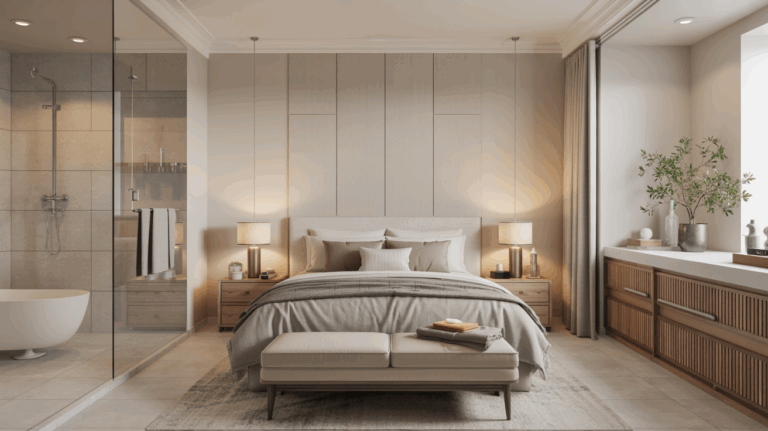The Impact of Natural Light on Color and Material Choices in Rooms
I have been, or can be if you click on a link and make a purchase, compensated via a cash payment, gift, or something else of value for writing this post. As an Amazon Associate, I earn from qualifying purchases. Please read my full Affiliate Disclosure for more information.
Natural light governs how colors and textures read in a room, so profile daylight behavior, calibrate artificial lighting, and test finishes under real hours to guarantee your design intent stays consistent from morning glow to evening shade. Expect palette shifts: morning softens contrasts, noon sharpens fidelity, and evening deepens hues. Materials will read differently with brightness and shadow, so document color, luminance, and texture responses. If you keep exploring, you’ll uncover practical strategies for light‑true palettes and finishes.
Key Takeaways
- Natural light alters perceived color warmth, saturation, and brightness, influencing swatch selection and room cohesion.
- Direction and intensity of daylight change material visibility, sheen, and texture across the day.
- Color temperature shifts under daylight affect wall, trim, and fabric choices for accurate matching.
- Metamerism and calibrated lighting ensure color consistency between samples and real-room encounters.
- Practical testing with calibrated instruments validates color stability under actual daylight and artificial lighting.
Understanding How Light Alters Color Perception
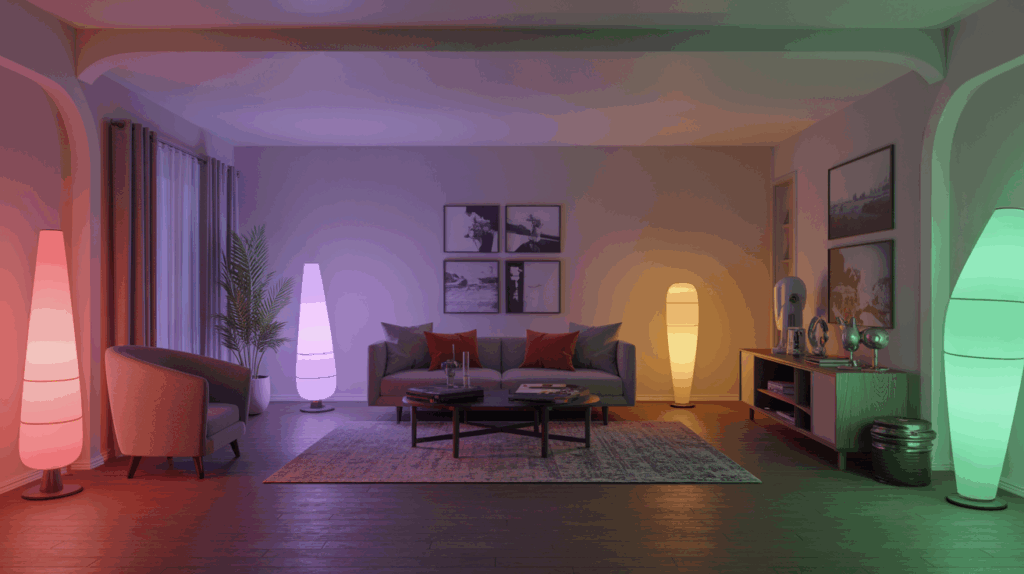
Light interacts with colors and materials in predictable ways, but perception shifts with changes in illumination. You observe how spectral composition, luminance, and angle affect perceived hue and brightness, informing color selections and finish choices. Artificial lighting introduces bias through color temperature and rendering index, demanding calibration to maintain color consistency across fixtures. You’ll quantify reflectance values and model metamerism risks to prevent mismatches between samples and installed surfaces. Documented tests establish tolerances for wall, trim, and fabric colors under selected lighting. By controlling light sources and measurement protocols, you ensure stable appearance, reproducibility, and project-wide color consistency throughout the space.
Morning, Noon, and Evening: Palette Shifts Across the Day
Morning light shifts your base hues as the room wakes, prompting attention to Morning Hue Changes and how fixtures interact with it. By noon, focus on Noon Light Temperatures to document how ambient white balance and material reflectance alter perceived color. In the evening, plan for Evening Tone Shifts to map how diminishing light reshapes texture visibility and palette decisions.
Morning Hue Shifts
As the day progresses, the room’s color and material perception shifts with changing daylight, creating distinct palette moments from morning to evening. You’ll observe morning light softening contrasts, noon light sharpening edges, and evening tones mellowing textures, guiding material selections and finish decisions. This pattern informs practical choices in reflectance, contrast, and perceived warmth, aligning with shadow play and color psychology to support function and mood.
- Early-day illumination influences swatch ordering and surface sheen
- Midday brightness expands material applicability and color accuracy
- Evening ambient light revisits texture balance and warmth cues
Noon Light Temperatures
Noon light introduces a distinct palette shift that sharpens edges and enhances color fidelity, enabling direct comparison across materials and finishes. You observe a cooler neutral bias, reducing warm cast seen in morning light, which clarifies texture and grain. This timing emphasizes paint durability by revealing subtle gloss and matte differences under consistent daylight, guiding finish selections for high-traffic spaces. When planning, consider artificial lighting as a complementary layer to maintain color constancy during noon tasks. Documented observations support material matching, ensuring that chosen paints resist fading and wear under mixed light. Precision reviews streamline procurement and reduce post-install adjustments.
Evening Tone Transitions
Evening tone shifts finalize the daily palette by deepening hues as ambient light wanes, while pointing to how colors and materials respond to reduced brightness and warmer casts. You observe color psychology effects as contrast and warmth guide mood, while light layering techniques preserve detail. Address material performance under lower luminance, noting surface reflectance changes and perceived texture shifts. Plan progressions to maintain legibility and cohesion across spaces. Implement controlled shifts in intensity and warmth, with measurable targets for final scenes.
- Color psychology-driven adjustments
- Light layering strategies
- Consistent material emphasis
Materials That Respond to Brightness and Shadow
Materials that respond to brightness and shadow exhibit perceptible changes in color appearance, reflectance, and texture as lighting conditions shift throughout the day. You’ll analyze material behavior under varying daylight intensities, noting how chromatic shifts, gloss levels, and surface microtexture influence perceived room tonality. Reflective surfaces amplify luminance contrasts near windows, while matte finishes tend to stabilize color perception away from direct light. For project decisions, quantify a material’s brightness response, specular and diffuse components, and ambient coupling. Document performance criteria, tolerance ranges, and maintenance impact, ensuring consistency across fixtures, furnishings, and architectural surfaces within the design brief.
Testing Color in Real Hours: Practical Weigh-Ins
When testing color in real hours, you’ll weigh practical indications against theoretical expectations by measuring color appearance, luminance, and surface response under actual daylight and artificial lighting conditions. You’ll document deviations between predicted and observed outcomes, emphasizing color accuracy and consistency across environments. This means controlled comparisons, calibrated instruments, and repeatable procedures to minimize bias while reflecting real-time usage.
- Use calibrated spectrometers and luminance meters for objective data
- Log color shifts under both daylight and artificial lighting to compare consistency
- Correlate material response with perceived color changes for project decisions
Strategies for Light-True Palettes and Finishes
To build light-true palettes and finishes, prioritize color stability, luminance accuracy, and material compatibility across real-world lighting. You’ll align artificial lighting forecasts with test-batch results, validating swatches under calibrated sources and varying intensities. Document paint formulations, focusing on pigment dispersion, binder chemistry, and gloss levels that resist color shift. Establish a decision framework for finish choices—matte, satin, or low-sheen—that balances washability with perceptual stability. Implement standardized measurement protocols for luminance and colorimetric error, and require cross-checks between digital simulations and physical samples. Maintain concise records to support reproducibility, procurement accuracy, and on-site consistency.
Selecting Surfaces That Resonate With Natural Light
Natural light reveals the character of surfaces, so select textures, finishes, and colors that respond predictably across the anticipated daylight range. You’ll optimize surface performance by matching wall textures and finishes to daylight shifts, while planning for artificial lighting interactions. Prioritize materials that maintain legibility, contrast, and tactile quality under varying irradiance and color temperature. establish a controlled palette, document reflectance values, and test samples at different times of day. Align selections with project goals, constraints, and budget, ensuring durable, accessible surfaces.
- Document reflectance targets for walls and textiles
- Validate with daylight and artificial lighting simulations
- Schedule multi-point finish trials, note color shifts
Conclusion
You’ll achieve a light-true palette by aligning color decisions with measured daylight variations, not static swatches. Track morning, noon, and evening shifts, then test finishes in real hours to confirm perceived hue and brightness. Choose materials that respond predictably to brightness and shadow, and document tolerated ranges for each surface. Establish decision criteria, iterate with practical weigh-ins, and integrate a light-management plan. This disciplined approach yields rooms whose color fidelity persists under natural light throughout the project lifecycle.

